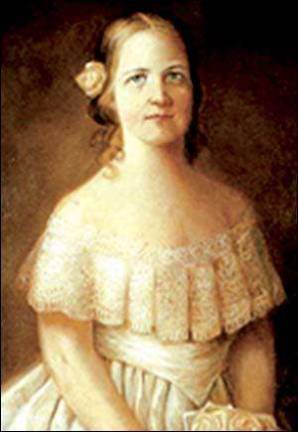Before she was Lincoln's first lady

Mary Todd’s restored home welcomes visitors, By Beth Kalet LEXINGTON, KY. It’s difficult to stand inside the Mary Todd Lincoln House in Lexington, Ky., without imagining the tall future president, her husband, who visited the house with her in 1847 en route to Washington, D.C., for his first term in Congress. How he must have towered over the others in this house, where no room is especially high-ceilinged and the seating some of it actually from the Todd household appears diminutive even in the gentlemen’s parlor. But it was the Todds’ home from 1832 to 1849, and Mary Todd, who was born only a few blocks away in 1818, lived in this house from the time she was 13 until she was 21, when she went off to live with an older sister in Springfield, Ill. The rest, as everyone knows, is history. The three-story Georgian brick building was originally built in 1806 as a tavern. Businessman and politician Robert S. Todd, Mary’s father, bought it in 1831 for $1,300, He had a large family, ultimately including 16 children from two different marriages. All but two lived to adulthood. According to an 1820 census, prior to the Todd family’s move to this home, the family had three female slaves. Tour guides say that when Lincoln visited, he must surely have been served by slaves and that he would have seen the whipping posts in the town. The Todd family’s Southern heritage posed a particular problem for Mary during the Civil War, as her large family’s sympathies were divided, with half favoring the Union. Four of her brothers fought in the Confederate Army and while Lincoln was in the White House, there was talk of a congressional investigation of Mary’s loyalty. A must-see Docents at the Mary Todd Lincoln House have their work cut out for them. An hour’s tour for $9, provides not just details on the family, their possessions, habits and the cataclysmic events they all lived through. It’s a meeting of the minds. Tour-goers are frequently aficionados of the Lincoln family and of Mary herself. Visitors want to discuss the minutiae of her life, especially the question of her sanity and her confinement in an asylum at the hands of her surviving son Robert, their relationship and her interest in spiritualism. The guides are more than up to that. It’s a history lesson come alive, as they share their deeply researched and considered opinions without ever disparaging their patron. And there’s a lot to learn about Mary, including the revelation that she was not the dark-haired woman conjured up in black and white images. In fact, she had light brown hair, almost blonde, and light eyes. As visiting groups gather in the hallway to wait for the tour to begin, a first fact offered, one they’re most proud of, is that this house, opened to the public in 1977, is the first site restored to honor a first lady. And this first lady, while she was deeply disparaged in her own time, was not just a presidential decoration. She was one of the best educated women of her times, and as a young woman very interested in politics. She was also interested in possessions, and many of her personal items have been donated to the house and are on show. Among them, a hot chocolate pot with her initials, that dates from the 1870s, and a mourning goblet given to young Tad Lincoln as a gift after his older brother Willie died from Typhoid fever at age 11 in 1862. Tad himself died at 18 of pneumonia and pleurisy in 1871. The house is furnished completely in period pieces or with items that were in the Todd family’s possession while they lived in the home. As it happened, Robert Todd died in 1849 during the second cholera epidemic that swept through the area. He died intestate, with a vague will, and the household property was sold at a public auction. A copy of the inventory from that auction was used to select appropriate pieces to furnish the house, after it was restored in the late 1970s. None are reproductions. In some cases, people whose family members had bought items from the Todd auction donated those back to the house for display. The authenticity of the pieces and the deep knowledge of the tour guides makes a visit to the Mary Todd Lincoln House a satisfying stop on any journey. This handsome house is one of several buildings operated by the Kentucky Mansions Preservation Foundation in Lexington, including the law offices of a man who courted Mary in her youth and had hoped to be president himself Henry Clay. For more information, visit www.mtlhouse.org. Recently Beth Kalet, editor of the Courier’s sister paper The Advertiser-News, visited the Mary Todd Lincoln House in Lexington, Ky., and filed this report.